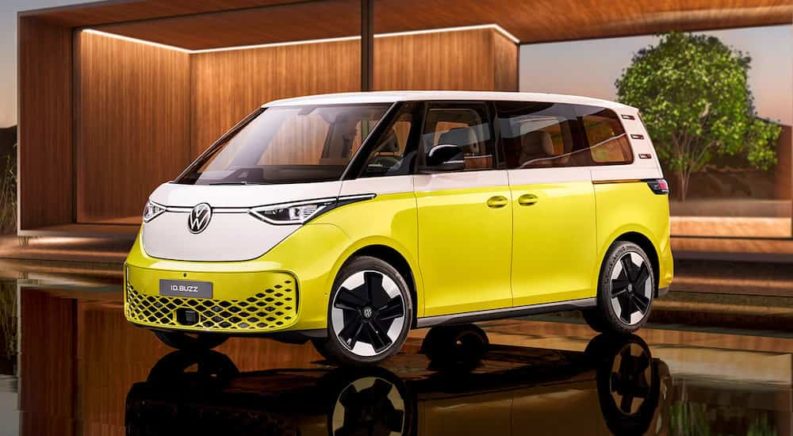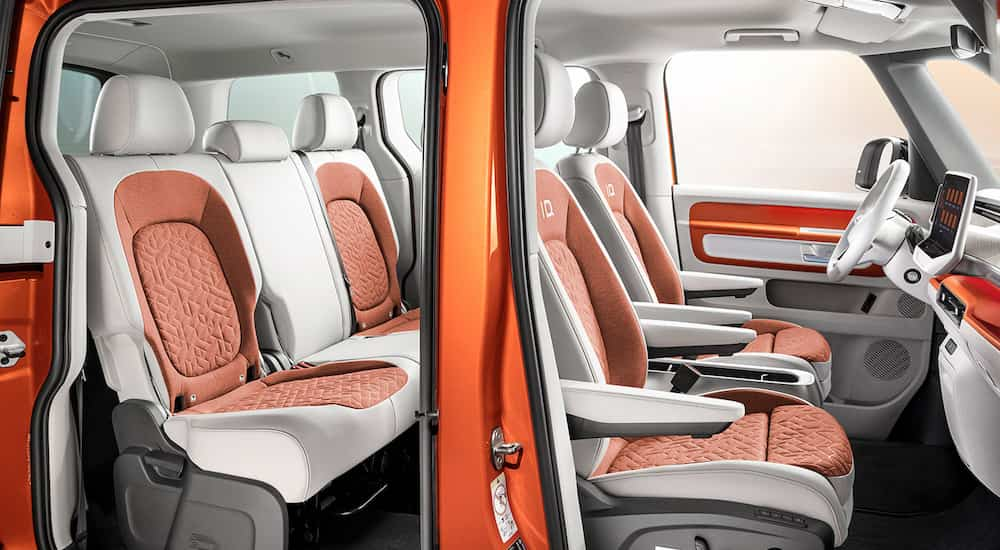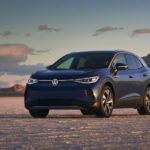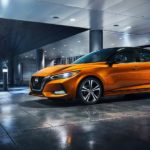Once upon a time, not so long ago, there was a choice between camping and glamping. With its flat face, rear engine, and incredibly solid construction, the Volkswagen bus has been an enduring symbol of adventure and freedom since the first Kombi and Commercial versions were produced in 1950. However, it has been many years since a brand-new bus has made its way to a VW dealer.
After many years of teasing and promising, a new Volkswagen bus is about to hit the scene, and it’s generating quite the…buzz. ID.Buzz, to be precise. An all-electric version of the manufacturer’s classic Microbus, the ID.Buzz, is due to hit US roads in 2024—with a European version arriving in 2023. In fact, very little is known about the proposed American version at this point, though Volkswagen has been diligent about providing snippets of information to keep our curiosity piqued.
In the meantime, perhaps it’s time to practice our Microbus “peace wave” and get our road trip gear out. Let’s take a look at where the Volkswagen bus has been—and where the ID.Buzz plans to take us in the future.
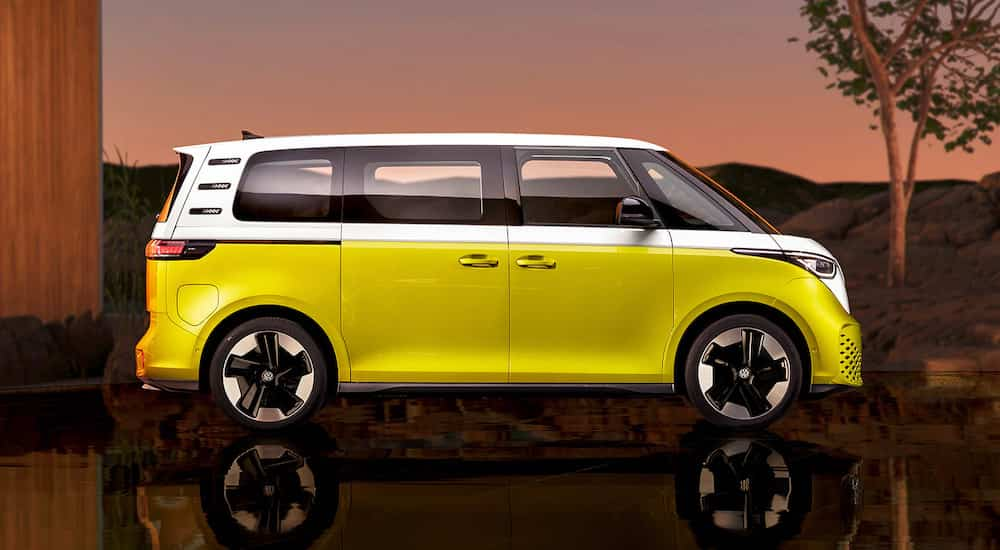
Understanding the Original Microbus
Long ago, in 1947, a Dutch VW importer by the name of Ben Pon was inspired by the parts-hauler vehicles used at the Volkswagen plant. These flatbed vehicles were fashioned out of the existing chassis used on the popular Beetle. Pon came up with a van sketch, which the manufacturer then perfected.
The concept behind the Microbus was a marriage of two relatively straightforward concepts: simplicity and usefulness. The design included a flat face exterior, spacious interior, rear-wheel drive, and an air-cooled engine.
Since it was easy to maintain with its uncomplicated design, the Microbus could essentially go anywhere and do anything, transporting people as easily as their belongings. The Kombi version was for passengers, with three rows of seating that could be reconfigured as needed to suit the situation. The Commercial version had no seats, and might just be the very first publicly available panel van.
Right away, drivers began customizing their Microbuses to become the ultimate in adventure vehicles. Though the original engine offered a mere 25 horsepower (not a typo), it was exactly what drivers wanted in terms of an easy-to-drive vehicle that could easily be outfitted to become a camper.
Volkswagen took notice of this trend. From beds to kitchen sinks, more and more Microbus drivers were turning their vehicles into campers. Rather than stand in their way, VW jumped on the concept, contracting with German manufacturer Westfalia to design camper conversion kits. In 1956, the first VW Westfalia campers hit the American roadways; a new level of freedom was unlocked.
It’s a Peace Van, Man
There are many essays and articles that explain the who and how of the Volkswagen Microbus and VW Westfalia becoming enduring images associated with counterculture movements. Is it because they were so darned easy to travel in? Possibly; even without a full camper set up, the first generation Microbus had an open interior, especially when the seats were removed. That meant more room for sleeping arrangements, parties, musical instruments, art supplies, hitchhikers, and more.
Or could the Microbus’s popularity be due to how very cool it looked? Again, another good possibility. Early Microbuses started with 11 windows (including the signature split windshield), while DeLuxe versions included 15, and Sunroof DeLuxe included a whopping 23 windows with its halo of miniature skylights. Plus, the VW bus was often painted in the popular European two-tone bright color scheme, which meant that it stood out from everyone else on the road. It doesn’t take a counterculture movement to have understood that the Microbus was its own unique class of vehicle.
Still, the “hippie van” stereotype persists. In fact, one can say that The Man quite literally took down the Microbus. Both the second generation of 1968 and the 1980 third generation—known as the “Vanagon”—were discontinued after very short runs due to the stiff tariff on import vehicles, as well as increased emissions control requirements. And what better way to stick it to The Man, man, than to create a vehicle that has zero emissions and slides well into the American plans for an all-electric future?
So What’s an ID.Buzz?
Is it a reboot or a sequel? Can the ID.Buzz even be compared to the traditional Microbus?
Well, technically, it’s a little bit of both—but yes, they are definitely related. As Jozef Kabaň, Head of Volkswagen Design put it in a May 2022 press release, “We very consciously ensured that we were not making another T1. The IDBuzz shows that it is successfully transferring the genes and stylistic elements of that iconic vehicle into the digital era.”
What does that mean for drivers? As mentioned, the ID.Buzz is going to be an all-electric vehicle. It will be built on the Modular Electric Drive (MEB) platform currently shared by the ID.4 and the Audi e-tron. The European versions include a 77-kWh battery, which we’ve been told will be larger in the American version. The range is anticipated to be a minimum of 260 miles per full charge, and the DC fast-charger option is alleged to be able to take the battery level from 5% to 80% in just 30 minutes.
Furthermore, the ID.Buzz includes an array of technology that would simultaneously mesmerize and appall the counterculture of yore. Your vehicle infotainment system uses your choice of a 10” or 12” touchscreen display with a 10” digital gauge cluster. You can also add the ID.Light feature, which is a windshield-sized display across the driver’s field of vision. This screen provides information regarding navigational changes or potential obstacles, with color-coded positional lights that notify the driver about what the danger is and where it’s located.
Want to adjust the mood? Just make some choices with the standard 10-color ambient lighting or the optional 30-color version. It has preconfigured lighting profiles, if you can’t make up your mind.
While the original bus did its best with 25 horsepower, the new iteration provides a much more modern 201 horsepower, and a proposed all-wheel drive version tops that at 295 horsepower. It also goes much faster than the original 55 miles per hour top out. And yes, the two-tone paint job appears to be in the cards, as well.
As far as more details, or exactly how the American public is bound to receive this all-new piece of nostalgia, we’ll simply have to wait for the release date. Given that many “Van Lifers” still use and cherish their original Microbuses, it’s pretty clear that many won’t find the new, electric version a direct replacement for their beloved home on wheels.
However, given the current appetite for more electric vehicles that can provide greater adventure in the face of rising gasoline prices, it’s not a big leap of the imagination to think that many drivers will appreciate what the ID.Buzz has to offer. Plus, several generations have “grown up” between the last Vanagon and today. Maybe it’s time for a new counterculture to have a new symbol of their freedom. Maybe it really is time for the ID.Buzz.

